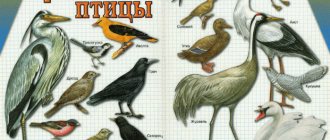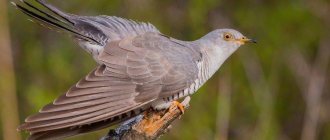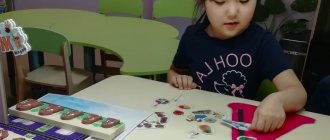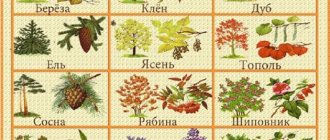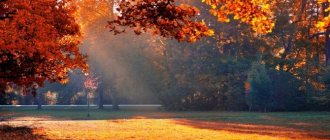Card index of outdoor games of the peoples of the North
Nadire Bannikova
Card index of outdoor games of the peoples of the North
Goal: development of speed, reaction speed, endurance, coordination of movements
The game is played at any time of the year, the number of players is not limited. One of the players has the tail of a fox or arctic fox in his hands. The driver tries to catch up and stain the one running with the tail, but this is not easy to do: the participants in the game pass the tail to each other as they run. When the "hunter"
stains the player with the tail, they switch roles. At the end of the game, a player is determined who has never been a driver.
development of speed, leg strength
The game is played at any time of the year, the number of players is not limited. 2-3 teams take part in the game. (rubber balls in nets) are tied to the right and left legs of each runner.
.
These will be the “traps”
. At the command of the leader, the players run to the landmark, run around it and run back, passing the baton. The team that completes the task first wins.
development of strength, dexterity, coordination of movements, attention, volitional qualities.
The game is played at any time of the year, the number of players is not limited. A circle with a diameter of 2 meters is drawn. In it, the opponents squat down (bear cubs, stretch their arms forward with their palms. It is necessary to push the opponent out of the circle, hitting his palms, or force him to the ground or the floor with any part of the body. Whoever manages to do this is the winner.
development of dexterity, coordination of movements, attention, courage.
development of dexterity, coordination of movements, attention, courage.
The game is played at any time of the year, the number of players is not limited. A circle is drawn and a control line is drawn from it at a distance of 9-12 meters. On command, all participants move around the drawn circle. On the command “deer step”
all participants walk in a circle, raising their hips high.
At the “turn”
, the vehicle turns in a circle and continues moving in the opposite direction.
At the “trot”
, participants run in a circle with their shins whipping backwards.
At the command “to your places,”
participants perform jumps
(running, jumping)
beyond the control line. The last player to cross the control line is eliminated from the game.
A hundred pastures with beetles. (Trace of running deer)
.
development of dexterity, coordination of movements, attention, courage, intelligence.
The game is played at any time of the year, the number of players is not limited. Several circles are drawn on the site (you can use hoops, each of them contains an important woman and two deer. The wolf sits behind a hill (at the other end of the site)
.In the words of the presenter:
An important woman wanders in the tundra,
Playing fawns run freely across the tundra, bend over, eat grass, and drink water. To the words “the wolf is coming!”
The fawns and fawns run away to their houses
(circles)
. The wolf takes the caught deer to itself.
Material from the game block “We live in the North” (author’s games)
Use of a compensatory focus in groups, taking into account the regional component.
The purpose of the game: to consolidate and expand knowledge about the animals of the Far North, to connect their living with natural conditions, to cultivate a caring attitude towards the animal world. Enriching children's active vocabulary.
On card No. 1 (A5 format).
An illustration with the full name of the species, a full-length image of the animal (male and female, cub), a large image of a paw print - a footprint, a chain of footprints (what remains after the movement of the animal), a drawing or photo of a dwelling in nature (lair, den, burrow, etc.), habitat and organization of residence (forest, tundra; flock, herd...).
Card No. 2 (1/2 A5 sheet format).
Close-up image of a footprint (black silhouette on a white background). Chips (forfeits).
Recommended illustrations for the game:
polar bear, common fox, wolf, reindeer, white hare, brown bear, common squirrel, common hedgehog, Siberian (Ob) lemming, sable, European mink, muskrat, pine marten, musk ox, weasel, elk, arctic fox, wolverine.
Texts and questions for conversation on the topics: “Animals of the Far North and Tundra”, “Red Book of the Yamal-Nenets Autonomous Okrug”.
“Who is this?”, “If you know animals, name them as soon as possible”, “Who lives where?”, “Guess the riddle”, “Tracks in the snow”, “Relatives”, “Cubs”, “Helping animals”, “What will happen , if a wild animal is placed with a person?”, “Who is not afraid of winter?”, “Chaos in the winter forest”, etc.
Didactic game “Housing and feeders” (birds).
Use of a compensatory focus in groups, taking into account the regional component.
Purpose of the game: expand children's understanding of birds, learn about different ways of wintering birds in comparison with poultry; establish the dependence of the behavior of birds on the method of obtaining food, nutrition, and the structure of the beak of each bird; develop the ability to correlate iconic symbols with images; know about the difficulties of life of the inhabitants of the forest and tundra. Teach children to express sympathy for birds, to think about different options for solving problem situations; find out how people (rangers and hunters in national clothes) help them in difficult times. Enriching children's active vocabulary.
Recommended illustrations for the game:
Birds (crow, sparrow, jackdaw, magpie, tit, bullfinch, woodpecker, crossbill, waxwing, nuthatch, ivory gull, guillemot, tern, ptarmigan, capercaillie...). Poultry (duck, chicken, turkey, etc.), use of illustrations “Birds of the Far North and Tundra”, “Red Book of the Yamal-Nenets Autonomous Okrug”, “Fauna of Central Russia”, “Wild Animals and Birds in Winter”; various bird nests (in a tree, in bushes, in the grass, in a hollow, under the roof of a house, etc.), feeders on the edge of the forest for animals; hay, grain feed, various seeds, root crops, huntsman, hunter.
“Signs for a corner of nature” (prohibiting and allowing); diagrams - models (schematic representation of body parts, appearance, size, habitat and what the cubs eat, where they are born from).
Texts and questions for conversations on the topics: “Animals and birds of the Far North and tundra”, “Fauna of Central Russia”, “Wild animals and birds in winter”. Folk signs (Khanty, Nenets, Komi-Zyryans).

